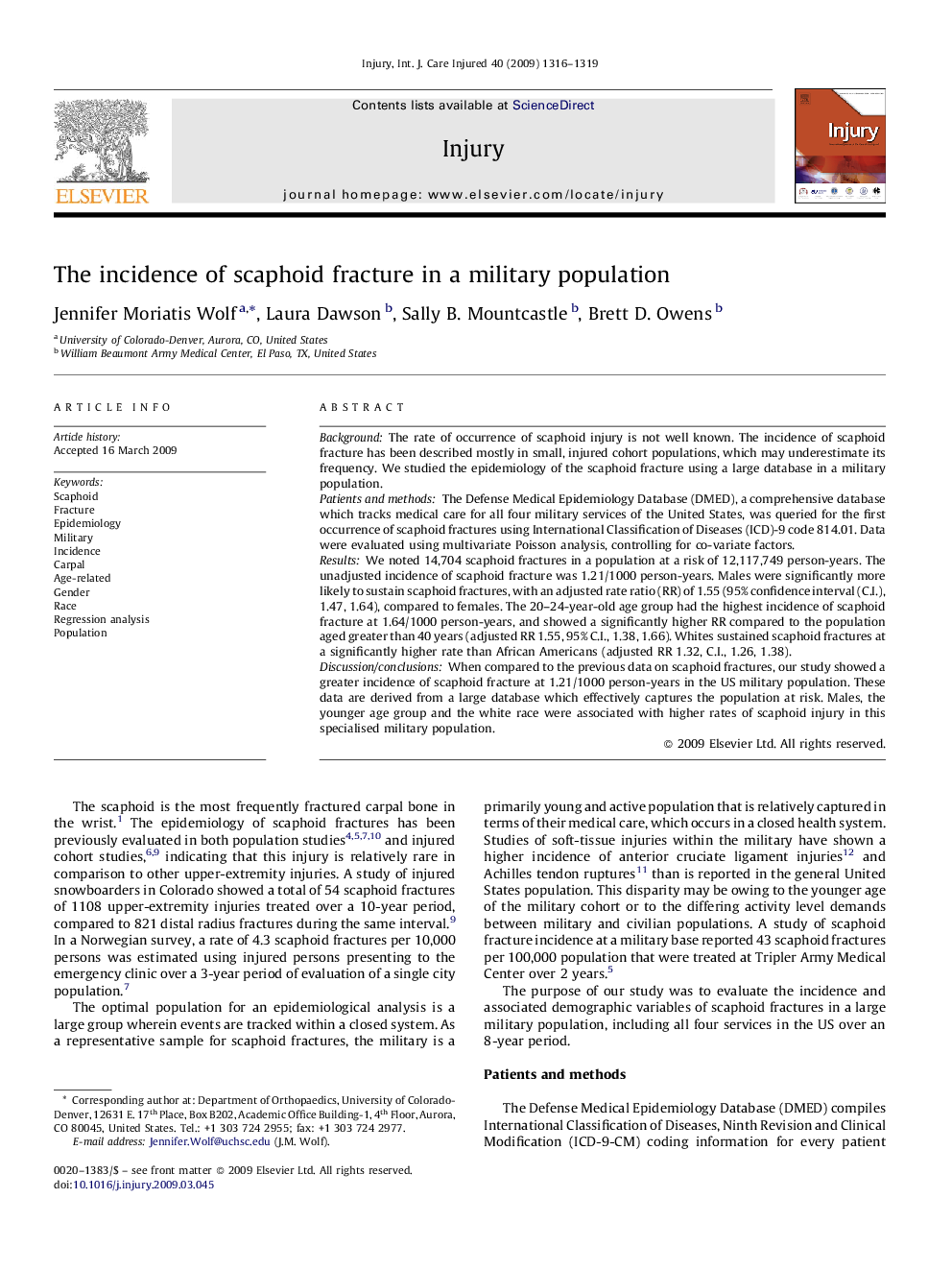| Article ID | Journal | Published Year | Pages | File Type |
|---|---|---|---|---|
| 3242351 | Injury | 2009 | 4 Pages |
BackgroundThe rate of occurrence of scaphoid injury is not well known. The incidence of scaphoid fracture has been described mostly in small, injured cohort populations, which may underestimate its frequency. We studied the epidemiology of the scaphoid fracture using a large database in a military population.Patients and methodsThe Defense Medical Epidemiology Database (DMED), a comprehensive database which tracks medical care for all four military services of the United States, was queried for the first occurrence of scaphoid fractures using International Classification of Diseases (ICD)-9 code 814.01. Data were evaluated using multivariate Poisson analysis, controlling for co-variate factors.ResultsWe noted 14,704 scaphoid fractures in a population at a risk of 12,117,749 person-years. The unadjusted incidence of scaphoid fracture was 1.21/1000 person-years. Males were significantly more likely to sustain scaphoid fractures, with an adjusted rate ratio (RR) of 1.55 (95% confidence interval (C.I.), 1.47, 1.64), compared to females. The 20–24-year-old age group had the highest incidence of scaphoid fracture at 1.64/1000 person-years, and showed a significantly higher RR compared to the population aged greater than 40 years (adjusted RR 1.55, 95% C.I., 1.38, 1.66). Whites sustained scaphoid fractures at a significantly higher rate than African Americans (adjusted RR 1.32, C.I., 1.26, 1.38).Discussion/conclusionsWhen compared to the previous data on scaphoid fractures, our study showed a greater incidence of scaphoid fracture at 1.21/1000 person-years in the US military population. These data are derived from a large database which effectively captures the population at risk. Males, the younger age group and the white race were associated with higher rates of scaphoid injury in this specialised military population.
